Alone on Death Mountain: The Dyatlov Pass Incident
The deaths of 9 hikers on the slopes of Kholat Syakhl in 1959 have captivated people for decades.

In February 1959, nine hikers from the Ural Polytechnical Institute died mysteriously on the slopes of Kholat Syakhl, a remote mountain in northern Russia. Something made them cut their way out of their tent in the middle of the night and run for their lives, all the while unprepared for the freezing temperatures. When their bodies were discovered, their injuries were inconsistent, and the reason for their frantic escape on that fateful February night remains unknown. What happened to the hikers at Dyatlov Pass?
The Hikers
The group consisted of ten college students from the Ural Polytechnical Institute (now Ural Federal University). The group were all Grade II hikers with extensive skiing and hiking experience, and they were embarking on this particular journey to earn their Grade III certifications. At the time, this was the highest skiing certification available in the Soviet Union and getting it required the team to travel a total of 300 kilometres (190 miles).
The group designed their own route, which would take them to the northern regions of Sverdlovsk Oblast and towards the upper parts of the Lozva River. Their goal was to reach Otorten, a mountain that was 10 km (6.2 mi) north of the site where the hikers died. This route had been approved by the Sverdlovsk City Route Commission, a division of the Sverdlovsk Committee of Physical Culture, and was estimated to be a Category III, the most difficult type.
The group was comprised of 8 men and 2 women:
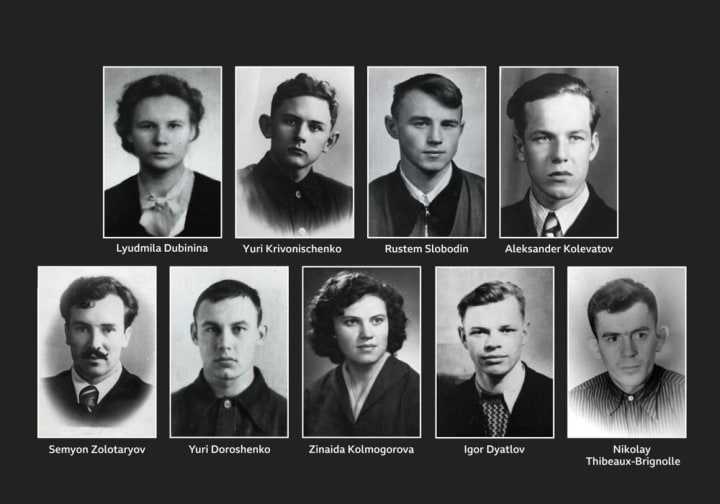
- Igor Alekseyevich Dyatlov (age 23): Igor was the leader of the expedition and was responsible for assembling the rest of the team. He was in the 5th Faculty of Radio Engineering and was known as a talented engineer; he even designed the stove that the group took on their fatal trip. People who knew him later described him as thoughtful and careful with his decisions. He was courting Zinaida "Zina" Kolmogorova at the time the incident occurred.
- Yuri Nikolayevich Doroshenko (age 21): Little is known about Doroshenko, except that he attended the same university as the others. He was once involved in a relationship with Zina Kolmogrova, but maintained a good relationship with both her and Igor Dyatlov after they broke up.
- Lyudmila Alexandrovna Dubinina (age 20): She was a third-year Engineering and Economics major. She loved singing and photography, and took many of the photos that were later recovered on the group's cameras. She was a very tough girl; on an expedition in 1957, she was accidentally shot by another tourist while they were cleaning a rifle. She endured the pain for the rest of the trip and even apologized for the trouble she caused other hikers.
- Georgiy "Yuri" Alexeyevich Krivonischenko (age 23): He had graduated from UPI in 1959. Notably, he had worked in a secret nuclear facility called Chelyabinsk-40 that experienced a radioactive leak in 1957, known as the Kushtumkoy Incident. He was one of the technicians sent to clean up the disaster.
- Alexander Sergeyevich Kolevatov (age 24): He was a fourth-year Physics major at UPI. He also had a previous degree from Sverdlovsk Mining and Metallurgy College, specializing in metallurgy of heavy nonferrous metals. He had worked in multiple secretive research institutes before embarking on the fateful hike. His friends would later describe him as a diligent, pedantic man who had clear leadership qualities.
- Zinaida "Zina" Alekseevna Kolmogorova (age 22): Like Igor Dyatlov, she was a Radio Engineering Major at UPI. She was an experienced hiker who had weathered many difficult situations, including one instance when she was bitten by a viper. Despite her pain, she refused to lighten her load because she didn't want to cause her companions any hardship. She was seeing Igor Dyatlov at the time of the fatal hike.
- Rustem Vladimirovich Slobodin (age 23): He graduated from UPI in 1959. He was known as an athletic, honest man who could be quiet and shy at times. He liked playing his mandolin and would often bring it on long hiking trips with him, including the final hike.
- Nikolai Vladimirovich Thibeaux-Brignolle (age 23): He graduated from UPI in 1958 with a major in Civil Engineering. His father was a French Communist that was executed during Stalin's reign, and he was born in a concentration camp for political prisoners. His friends said that he was energetic, friendly, and open with a good sense of humour. Everyone who had gone on previous hiking trips with Nikolai said that he cared deeply for everyone around him, and he would often help younger or weaker members carry bags or fix how their belongings sat to make them more comfortable. Heartbreakingly, he had promised his mother that the trip in February 1959 was going to be his last hiking trip.
- Semyon "Alexander" Alekseevich Zolotaryov (age 38): He was the oldest and most mysterious member of the Dyatlov crew. He was a native of the North Caucasian Kuban Cossacks and served in the Great Patriotic War between October 1941 and May 1946. Afterwards, he attended the Leningrad Military Engineering University and the Mink Institute of Physical Education. The day that he died, February 2, 1959, would have been his 38th birthday.
- Yuri Yefimovich Yudin (age 21): He was a 4th-year student at UPI. Yudin was forced to leave the expedition early due to debilitating joint pain. Later, he would become the only window of insight into the tragedy.
Beginning the Expedition
On January 23, 1959, the group was issued their route book and left the city of Sverdlovsk (now Yekaterinburg). The group travelled by train to the town of Ivdel, arriving on January 25. They then took a truck to the village of Vizhai, the last inhabited settlement before the wilderness of the Ural Mountains. They spent the night in Vizhai and left to trek towards Gora Otorten on the morning of January 27.

On January 28, Yuri Yudin decided that he needed to turn back. He suffered from multiple health ailments, including rheumatism and a congenital heart defect, and was suffering from pain in his joints and knees that made him unable to hike. Yudin returned to Vizhai while the other hikers continued on; he is considered the only survivor of the Dyatlov Pass Incident. Later, he would state that he witnessed an interesting exchange between Igor Dyatlov and a local man - he said that the man warned Dyatlov about something along their path, and Dyatlov brushed him off.
According to the diaries and cameras that were recovered after the incident, the group arrived at the edge of the highlands and prepared to begin mountain climbing on January 31. They began to move through the pass the next day. It's assumed that they planned to get through the pass and camp on the other side, but the weather was worsening. The group lost their direction at some point and deviated towards the top of Kholat Syakhl. For some reason, the group decided to camp where they were instead of moving 1.5 km downhill into a forested spot that would have better protected them from the weather. Yuri Yudin later offered some possible insight into this: "Dyatlov probably did not want to lose the altitude they had gained, or he decided to practice camping on the mountain slope."
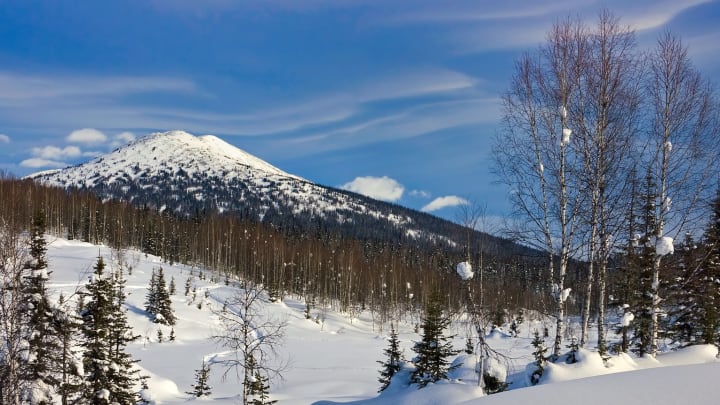
Disappearance
The group never made it back from Kholat Syakhl. They were supposed to be back at Vizhai no later than February 12, and Igor Dyatlov had promised their sports club that he would send them a telegram as soon as the group returned. Initally, there wasn't too much alarm because delays are common on trips like the one the Dyatlov group undertook. Dyatlov had even told Yuri Yudin that he expected the trip to take longer than the initial estimates. A search wasn't launched until February 20, 1959, when the families of the missing demanded that someone search for their children.
The first searches were conducted by volunteers from the Ural Polytechnical Institute; later, the army and police forces would get involved, using planes and helicopters to search for the hikers.
On February 26, the group's camp was discovered. The tent was badly damaged, halfway torn open and covered in snow. Investigators later discovered that the tent had been cut open from the inside. The group's gear, personal belongings, and even most of their shoes were left inside the tent, alongside multiple knives and hatchets that appeared undisturbed. Volunteers also recovered the group's cameras, minus one, and group diary at the site. Notably, there were no thorough photographs taken of the tent's contents - the belongings were handled by student volunteers that attempted to organize the belongings by name without care for any evidentiary protocols.

Investigators managed to find nine sets of footprints leading away from the camp; most appeared to be wearing only socks or were made by bare feet. The prints could be followed, but after 500 meters they were covered by snow. Searchers went down towards the forested area where the tracks were leading and found the remains of a small fire underneath a Siberian pine. Alongside this fire, the bodies of Georgiy Krivonischenko and Yuri Doroshenko were discovered, laid side by side. They were dressed only in their underwear.
Tree branches five meters above the site were broken suggesting that at least one of the hikers had attempted to climb up to get a better view, perhaps looking for the camp. Upon further inspection, officials found skin and blood lodged in the bark of the tree, further confirming that hypothesis. Georgiy Krivonischenko's remaining clothing was tested with a Geiger counter and was found to contain a level of radiation, despite none of the other hikers' bodies producing a similar result.
In between this site and the camp, the searchers discovered three more bodies. Igor Dyatlov, Zinaida Kolmogorova, and Rustem Slobodin (who was not discovered until March 5) were discovered in positions suggesting that they had been attempting to return to the camp when they died. They were found 300, 480, and 630 meters respectively from the tree where Krivonischenko and Doroshenko were discovered. Slobodin's watch had stopped at 8:45 pm.
On March 31, search parties witnessed a strange event on the Kholat Syakhl mountainside. A searcher named Valentin Yakimenko described it like this:
"It happened early in the morning while it was still dark. Victor Mescheryakov, who stood guard that night, left the tent and saw a large glowing sphere in the sky. He woke up everyone. We watched this orb (or a disk) for about 20 minutes until it didn't disappear behind the mountain. We saw it in the South-East direction from our tent. It was moving in the Northern direction. This event freaked everyone. We were sure that this event was somehow involved in the death of the Dyatlov group."
It took the search parties two months to find the remaining four hikers. They were finally found on May 4, 1959, under 13 feet of snow. They were in a ravine 75 meters further into the woods than the pine tree that Krivonischenko and Doroshenko were found underneath. Three of these four bodies were better dressed for the weather than the others, and it's possible that they had removed clothing from some of the other bodies to try and keep warm. Lyudmila Dubinina in particular was discovered wearing Krivonischenko's burnt trousers, and her left foot and shin were wrapped in torn pieces of someone else's jacket. Zoltaryov was discovered with a camera hanging around his neck; notably, Yuri Yudin did not identify it as one of the cameras that the group had packed for the trip.
Searchers later discovered a den that is presumed to have been dug by the four to better protect themselves from the elements. It brought a terrifying possibility to light - the group could have been alive for days or even weeks after the night of February 2, and had died later of some other cause. They had clearly not died from hypothermia, and their discovery spurred even more questions about the fate of the Dyatlov group.
Autopsy Findings
The first five bodies were taken for a medical examination immediately. The autopsy found no major injuries that could have led to their deaths, and the medical examiner concluded that the five must have died from hypothermia. Slobodin had suffered a minor fracture to his skull, but it was determined not to be life-threatening. Several witnesses also stated that the bodies' skin was deeply tanned or discolored in some way. Notably, Doroshenko had greyish foam around his mouth, almost as though he had suffered from some sort of pulmonary edema.
When the four bodies that were found in May were examined, the findings were completely different. Three of the four had been subjected to major internal damage; Nikolai Thibeaux-Brignolles' skull had significant damage, and Lyudmila Dubinina and Semyon Zoltaryov had major fractures in their chests. The force required to cause this kind of damage is comparable to a high-speed car crash, but the bodies didn't exhibit any outward wounds associated with their internal injuries. It was almost as though they'd been subjected to an extremely high level of pressure. Zoltaryov and Dubinina's injuries were very similar in direction and force, despite a marked difference in height between the two. This leads some pathologists to believe that their injuries were not caused by a single event.
On top of that, the four May bodies had soft tissue damage to their heads and faces. Zoltaryov was missing his eyes, Aleksander Kolevatov was missing his eyebrows, and Dubinina was missing her tongue and eyes. V.A. Vozrozhdenny, the medical examiner performing these autopsies, initially surmised that these injuries happened post-mortem and were caused by the bodies' location in a stream. However, something strange was later discovered - Lyudmila Dubinina had around 100g of coagulated blood in her stomach. This meant that she had been alive when her tongue was removed from her mouth.
Investigation
Despite the incredibly low temperature - approximately -25 to -30 Celsius (-13 to -22 Fahrenheit) - the hikers were only partially dressed. Some were wearing only one shoe, while others had only their socks or bare feet. Originally, investigators speculated that members of the indigenous Mansi tribe, who were local to the area, had attacked the group and murdered them for encroaching on sacred land. Several Mansi tribespeople were interrogated, but the investigation didn't support this hypothesis. The only footprints that were found were those of the hikers themselves, and there was no evidence of a fight with humans. Additionally, Vozrozhdenny stated that the fatal injuries of Thibeaux-Brignolles, Dubinina, and Zoltaryov could not have been caused by a human - the force was too strong and the bodies had no external injuries to indicate that this force had been applied in a fight or with an object.
The official conclusion of the inquest was that the group had died due to a "compelling natural force." The inquest was officially closed in May 1959 because there was a complete absence of a guilty party. The files were placed in a secret archive and have yet to be fully released publicly.
There are a few facts that are universally agreed upon:
- The hikers cut their way out of the tent from the inside and all fled the site under their own power.
- Krivonischenko, Doroshenko, Dyatlov, Kolmogorova, and Slobodin all died either the night of February 2 or shortly thereafter.
- Dubinina, Zoltaryov, Thibeaux-Brignolles, and Kolevatov survived the initial event and most likely cut the clothing off of their fallen companions to attempt to survive their circumstances.
- There is no logical explanation for the injuries of these latter four victims.
- One camera was missing from the tent, as well as Kolevatov's personal diary. These have never been found, but Zoltaryov was discovered with a camera that Yuri Yudin could not identify. The contents of this camera is unknown, and officials say that melting snow around the body damaged the film.
- No money or valuables were taken from the campsite, and there is no evidence of human presence in the area the night the hikers fled.
Theories
Though the Dyatlov Pass Incident has never been officially solved, there are a multitude of theories about what could have happened to the hikers on the night of February 2, 1959.
1. The Special Forces Theory
One of the most common theories is that Soviet Special Forces were engaged in something top-secret up on the mountain that night, and they murdered the hikers because they witnessed something they shouldn't have. This version of the theory is usually taken as implausible, considering that the original search parties never reported unusual footprints in the area. It should be noted that the footprints they did find were never closely examined, but there were only nine sets and they most likely came from the hikers.
Many proponents of this theory think that, rather than murdering the hikers outright, the Special Forces were simply testing prototypes of the R-12 rockets that they would adopt in March 1959, shortly after the Dyatlov Pass Incident. Again, there is very little evidence to prove this theory, but it still remains to this day due to the secrecy of the Soviet intelligence agencies.
2. The Western Spy Theory
This theory is based on the difficulty for American and European spies working in the Soviet Union at the time. Stalin's secret police were immediately suspicious of any foreigners, and the only way to deliver information was through an illegal spy network. So it was common for Western spies to recruit Russian citizens to find out information and deliver it to them. The US was engaged in a race with Russia to develop nuclear weapons at the time, and the theory is that one or more members of the Dyatlov group had been hired by the KGB to deliver fake proof in the form of clothing tainted by radioactivity back to a Western spy. At the time, the only way to pinpoint a nuclear site was by delivering an object tainted with radioactivity.
The two hikers that would have been the best candidates for such a task were Zoltaryov and Krivonischenko. Krivonischenko had previously worked in a secret nuclear facility, and it wasn't impossible that a young, intelligent student had been approached by a Western intelligence agent with the aim of stealing nuclear secrets. If Krivonischenko had been contacted by a Western spy and decided to report them to a supervisor or even a resident KGB agent, he could have become a pawn in delivering fake proof to throw the Western agent off.
As for Zoltaryov, many think that he would have acted as backup for Krivonischenko. He had a military background and is known to have introduced himself as "Alexander" to the group, rather than by his real name, Semyen. He also had a strange military history, and survived working in a military engineering unit at a time when joining such units was essentially an act of suicide.
The lynchpin of this theory is the radioactive traces found on Krivonischenko's clothing. None of the other hikers had been tainted, and many simply cannot believe that a young, intelligent engineer would have kept clothing that he wore while cleaning up a nuclear disaster, let alone worn it around. It's thought that Western agents were going to be dropped somewhere along the Dyatlov group's route, posing as lost tourists. When the group came across these people, they would share food and clothing as a "gesture of goodwill", allowing Krivonischenko to pass on the radioactive clothing.
But something went wrong, and the agents simply murdered all of the hikers to cover their tracks. They forced them from their tent without their shoes and left the first five to die in the cold while they searched the camp for any traces of their presence. Later, they tracked down and killed the final four hikers to tie up loose ends.
Despite the apparent logic of this theory, there are definitely holes in it. Firstly, why would two Soviet agents posing as accomplices to Western spies take so many civilians along with them to make a drop? There were seven other people on the trip with them, leaving a lot of possible witnesses and unpredictable factors in the whole situation.
Secondly, if humans did kill the last four tourists, then why did they bludgeon them to death instead of just shooting them? Hunting rifles were legal in Russia at the time, and many expeditions had at least one with them (though it's uncertain whether this was true for the Dyatlov group). There was also a wealth of knives and hatchets inside the tent that were left unattended. Why were none of these weapons used, either by the attackers or by the hikers while trying to defend themselves? There is also the issue of the injuries sustained by the final four hikers - multiple experts have stated that the injuries are too great and have no associated external damage, making it highly unlikely that they were inflicted by a human.
3. The Criminal Theory
Siberia in this time period was a place highly populated with Gulags. Many political prisoners were released from these places between 1953 and 1956, but there were many still imprisoned by the time the Dyatlov group embarked on their fatal hike. There were many small concentration camps around the region, with the closest being Ivlag, which was just a few miles from the campsite.
Notably, there were no recorded escapes around the time of the incident, but fans of this theory think that it could have been prisoners who escaped previously and were in hiding somewhere in the Ural Mountains, missing the death of Stalin in 1953 that granted amnesty to all political prisoners.
It's assumed in this theory that the hikers came across a political prisoner who was in hiding that murdered them to keep their secret. One of the most compelling pieces of evidence is a piece of clothing that was found at the site by Yuri Yudin, who said that it did not belong to any of the group members. It was an obmotki, a wide piece of cloth meant to be wrapped around the legs. They have a distinct shape and are made from a specific material, and happen to have been common amongst soldiers and prisoners in the concentration camps. No one knows how this clothing got to the campsite, and it disappeared from the evidence archives at some point after it was found. This theory is compelling, but it presents the same logical issues as the previous theories, with the injuries of the final hikers being inconsistent with human interference and a lack of evidence of other humans at the scene.
4. The Mansi Theory
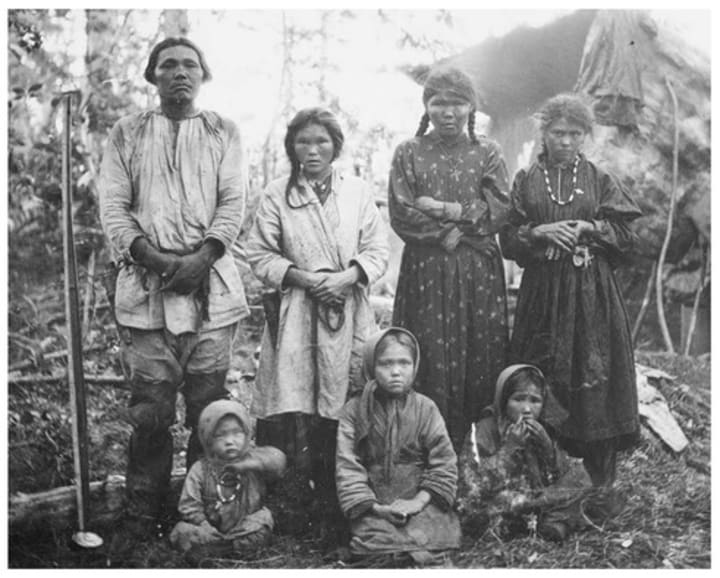
Though this theory was largely discounted by contemporary investigators, some still believe that Mansi tribespeople are responsible for the murder of the Dyatlov group. At the time, investigators looked back on the case of a female geologist that wandered into sacred lands of the Mansi and was tied up and drowned in a lake.
However, this theory falls through when one realizes that Kholat Syakhl is not sacred to the Mansi; in fact, it is feared and generally avoided. The traditional name of the mountain even translates to "Death Mountain" or "don't go there." Additionally, many believe that if the Mansi were responsible, they would have taken all the supplies that they could from the campsite. Survival in the Ural Mountains is difficult, and leaving the wealth of supplies behind doesn't make any sense.
5. The Avalanche Theory
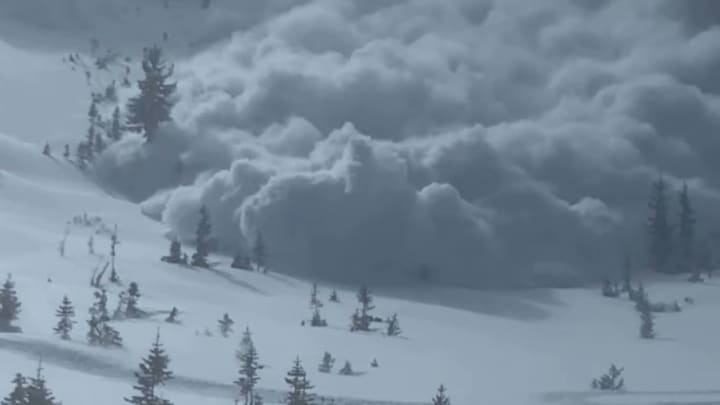
Some believe that the death of the Dyatlov group was caused by an avalanche on Kholat Syakhl. The mountain isn't very tall or steep, and the hikers' diaries report a fairly thin covering of snow while they were up there. However, these facts don't entirely discount the possibility of a small avalanche rolling over the tent and causing havoc for the inhabitants inside, possibly forcing them to cut their way out.
Further retreat would have been necessary if the hikers were worried that another avalanche would occur, explaining why the surviving four did not return to the tent. Supporters of this theory believe that the Dyatlov group attempted to go back towards the Auspiya River, but mistakenly wandered further down into the valley of the Lovza River. Later, the snow from the avalanche could have been blown off the mountain by strong winds, hiding any evidence of the disaster.
However, this theory is full of holes. Evidence from the footprints suggested that all of the hikers left the tent of their own volition and got down the slope with relative ease; if the injuries found on the four hikers discovered in May had been sustained inside the tent, it's likely that they wouldn't have been able to move on their own.
Secondly, these people were experienced hikers, and they would have known that the dangers of freezing to death far outweighed the dangers of dying in another avalanche. They would have tried to retrieve their clothing and other supplies. And finally, pictures of the tent show that the poles are still at least partially vertical; only the middle part has collapsed, either due to the escape or snow collecting on top of it. It shows no sign of being crushed in an avalanche.
6. The UFO Theory

This is where it starts getting weird. There are some conspiracy theories that claim that a UFO scared the group badly enough that they abandoned their tent and refused to return. Though outlandish, there may be some evidence to support these claims. Remember Valentin Yakimenko's account of the strange orb in the sky over the site? Rescue parties and military operations searching for the hikers were said to have witnessed similar events several times throughout the searches.
These accounts were later stricken from the official record, but they survive in contemporaenous reports. Several geologists who were working 70 km from Kholat Syakhl reported that they even saw the orbs on the evening of February 1st, the night of the Dyatlov tragedy.
If these bizarre sightings were not UFOs, then many believe that they were secret launches by the Soviet space program. At around the same time, the Armed Forces did launch several rockets from the Baykanur Base, which is still used for the Russian space program today. However, the military claimed that these rockets landed in the northern Ural Mountains, far from the site of the Dyatlov tragedy.
Another explanation could be R-12 rockets from around Sverdlovsk, which we mentioned in the Soviet Special Forces theory. The region was also home to multiple S-75 rocket bases. Investigators discovered that the tops of many pines in the forested area down the slope from the camp were burned, and they could not explain why.
Many theorists claim that infrasound caused by these rocket launches could explain the apparent panic that the group experienced when leaving the tent. Infrasound is known to create unpleasant feelings of dread in humans, and is responsible for many instances of "hauntings" in old buildings.
However, there are holes in this theory as well. The orbs that were witnessed in the area often changed direction and were described as experiencing "non-ballistic motion". Occasionally, they just hovered over the mountains like a celestial body. Lev Ivanov, the man in charge of the original investigation into Dyatlov Pass, claimed that members of the Soviet Congress forced him to remove any mention of UFO involvement from his official report. The KGB archives regarding this theory have not been unsealed, and Soviet officials dismissed this theory at the time as pseudo-science.
7. The Yeti Theory
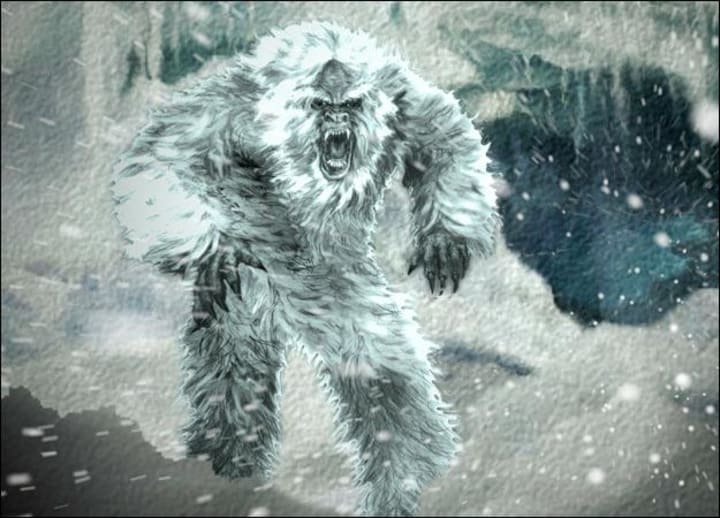
If the UFO theory wasn't strange enough for you, there are many who believe that a Yeti or similar creature was responsible for the Dyatlov Pass Incident. The cornerstone of this theory is Mansi lore; they believe that there are angry or malicious humanoid animals called menkvi living in the Ural Mountains. Legends claim that their anger towards humans caused the gods to punish the world with a great flood. A few menkvi survived on top of a mountain called Luv-Syakvur, and those who remained are forced to roam the mountains in solitude.
According to student volunteers from the original search parties, Mansi tribespeople who were assisting with the search experienced shock upon seeing the bodies. They believed that a menkvi had murdered the hikers, and backed it up by saying that there had been attacks on caribou and reindeer herds in the area in the weeks before the attack. The bodies of the animals were left in place, but their internal organs were damaged.
Fans of this theory point to the fact that the Dyatlov group started their climb fairly late that day, and took quite a while to cache some supplies for the trip back. Theorists believe that they had been scared by a creature and were reluctant to continue. They further state that the yeti theory could explain the strange location of the camp. Igor Dyatlov wrote this in his last diary entry:
"It is hard to imagine such a comfort somewhere on the ridge, with a piercing wind, hundreds of kilometers away from human settlements."
Despite this opinion, Dyatlov selected this exact spot for the camp that night. It's thought that perhaps he thought it would be safer than down in the forested area where a creature could sneak up on them. They also suggest that the holes that were cut from the inside of the tent were not holes for escape, but rather for surveillance of the forested area so that they could watch for something threatening. Upon seeing the creature, it's assumed that the hikers ran without care to gather their things, and that they might have tried to make their way back to the cache that they had left but took the wrong valley and died in the attempt. Many believe that this theory also explains why Zoltaryev was found with a camera; was there something unbelievable happening that he needed to photograph?
Many reports state that a line in the group diary states, "Now we know that the snowman exists." However, this line was found in a makeshift newspaper that the group was making called the "Evening Otorten." It was dated February 1st, but it usually assumed to be a joke or a fun project the group was engaged in on their trip.
Notably, the American Embassy in Nepal sent a document to the Department of State in Washington DC entitled "Regulations covering mountain climbing expeditions in Nepal - Relating to Yeti?" It contained regulations for climbers to follow if they were to encounter a yeti, and it was dated December 20, 1959.
Legacy
The tragedy of the Dyatlov group remains an open case. Shortly after the incident, the pass where the group met their fate in 1959 was renamed "Dyatlov Pass" after Igor Dyatlov. Today, hikers repeat the trail that the group was meant to run on that fateful trip, but groups of 9 are considered unlucky. In the early 2000s, a group of nine hikers repeated the expedition under supervision, and found it easy to remain in close contact with each other and navigate the mountainside, even with snow cover and the cover of night.
All nine hikers were eventually buried in Sverdlovsk (now Yekaterinburg). 7 are buried in a communal grave in the Michailovskoe Cemetery, which is regularly visited and decorated with flowers and candles. For some unknown reason. Semyen Zoltaryev and Yuri Krivonischenko are buried separately from the rest in Ivanovskoe Cemetery, which is now closed to the public. Oddly, Zoltaryev's first initials are wrong on his grave - they are "A.I." instead of "S.A." for Semyen Alekseevich. It's assumed that this is because he had introduced himself under a different name to the group.
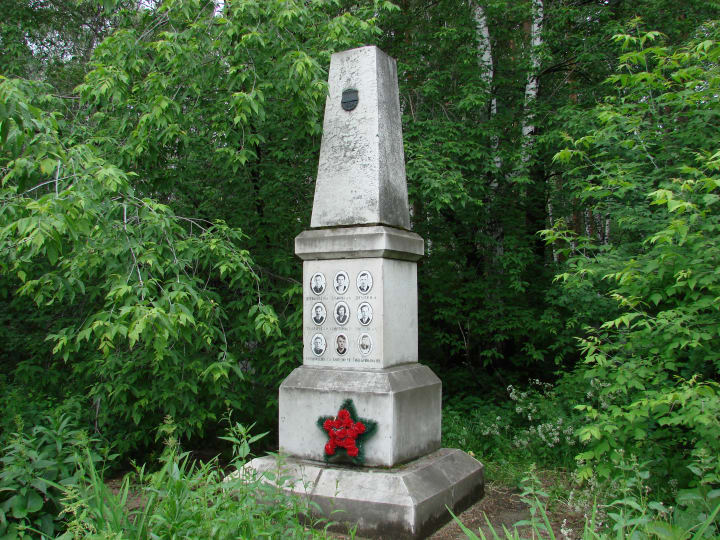
In 1999, a group called the Dyatlov Foundation was founded in Yekaterinburg with the help of the Ural State Technical University. It was originally led by Yuri Kuntsevitch. The foundation's purpose is to continue the investigation of the tragedy and maintain the Dyatlov Museum to memorialize the victims.
On July 1, 2016, a memorial plaque was unveiled in Solikamsk in the Perm region of the Ural Mountains. The plaque was dedicated to Yuri Yudin, who passed away in 2013 at the age of 75, never knowing what happened to his friends in 1959.
The case still sparks intense interest, both amongst Russians and those abroad. It is occasionally called "Russia's Kennedy Assassination" for the level of conspiracy theories and obsession that continues to this day. In 2019, the investigation was officially reopened by the Russian Federation, but so far no news has come out of this project.
Pop Culture
This case has sparked many references in pop culture. The 1990s saw a spike in interest in the case after Anatoly Gushchin published his novel, The Price of State Secrets is Nine Lives.
In 2013, a film called The Dyatlov Pass Incident (now called Devil's Pass) was released. The film's plot follows five American students who attempt to retrace the original party's steps, but they change several names and details to preserve the film's status as a work of fiction.
And in 2015, the Polish game developer IMGN.PRO released Kholat, a first-person horror game that allows the player to retrace the Dyatlov group's steps and find out the "real cause" of their deaths. In the same year, a Russian atmospheric doom metal band called Kauan released an album called Sorni Nai that attempts to reconstruct the events leading up to the tragedy.
Extracurricular Reading
Astonishing Legends Episode 23: Dyatlov Pass Part 1
Dead Mountain: The Untold True Story of the Dyatlov Pass Incident by Donnie Eichar
About the Creator
Skylar Banach
I'm a freelance writer with an interest in true crime, entertainment, and a wide range of other things.
My avatar was created on Picrew with a generator created by the very talented Hunbloom!
Enjoyed the story? Support the Creator.
Subscribe for free to receive all their stories in your feed. You could also pledge your support or give them a one-off tip, letting them know you appreciate their work.


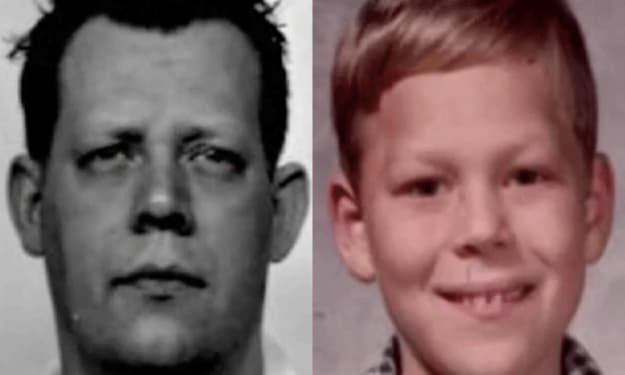


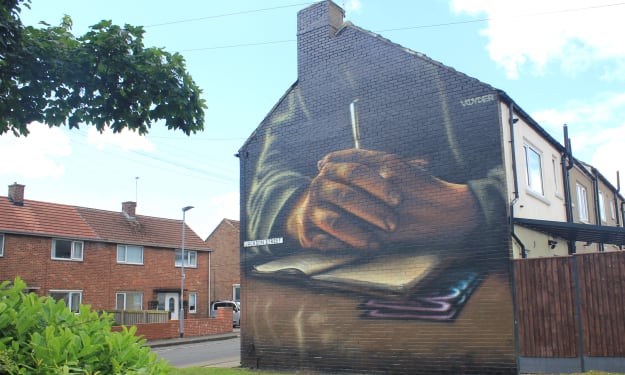
Comments
There are no comments for this story
Be the first to respond and start the conversation.